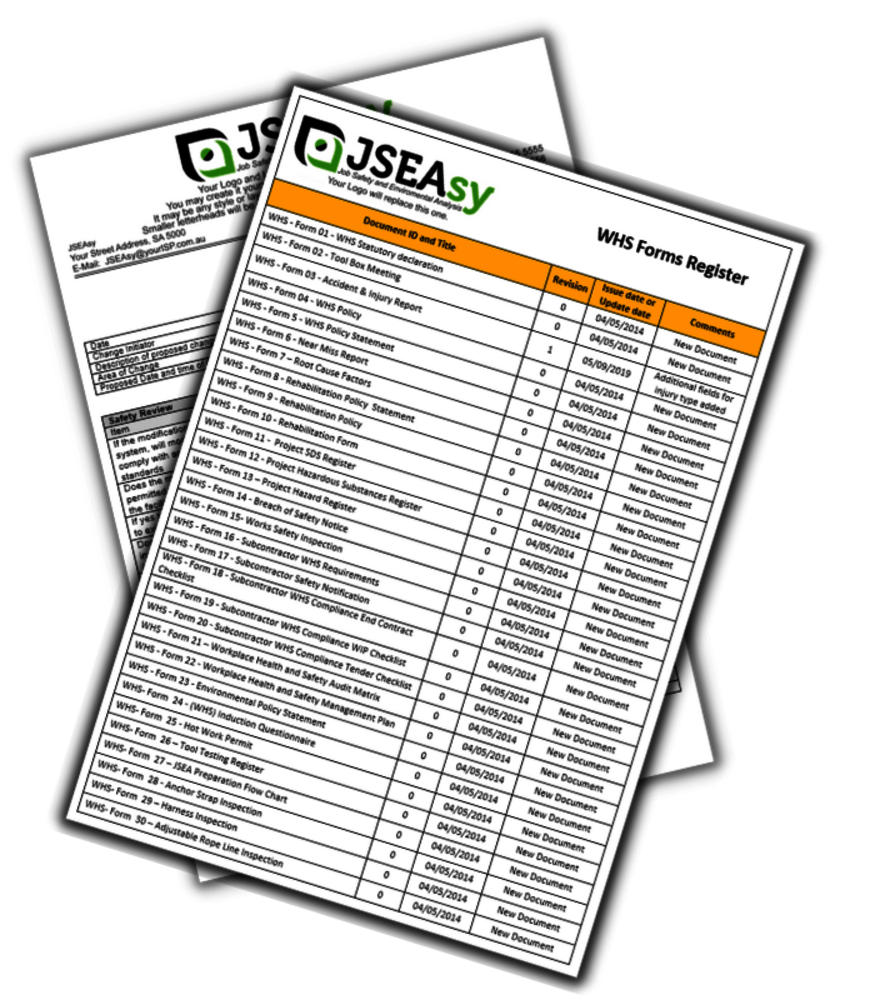Management of Change. This document will help you consider the flow-on effects of your planned changes.
Having a Management of Change (MoC) document is essential for ensuring that changes within an organization, particularly those related to processes, equipment, personnel, or operations, are managed systematically and safely. Here are the key reasons why a Management of Change document is important:
Ensuring Safety and Risk Management
- Identifying Hazards: The MoC process helps identify potential hazards or risks associated with changes before they are implemented. This proactive approach ensures that safety is maintained, and risks are minimized.
- Preventing Accidents: By thoroughly assessing the impact of changes, the MoC document helps prevent accidents, incidents, or operational failures that could arise from unplanned or poorly managed changes.
Maintaining Operational Continuity
- Minimizing Disruptions: A structured MoC process ensures that changes are implemented in a way that minimizes disruptions to ongoing operations. This helps maintain productivity and reduces downtime.
- Ensuring Compatibility: The MoC document ensures that changes are compatible with existing systems, processes, and equipment, preventing issues that could lead to operational inefficiencies.
Compliance with Legal and Regulatory Requirements
- Meeting Regulatory Standards: Many industries are subject to strict regulations that require changes to be managed and documented systematically. An MoC document helps organizations comply with these regulatory standards.
- Avoiding Legal Consequences: Properly managing changes can protect the organization from legal liabilities that could arise if changes lead to safety incidents or non-compliance with regulations.
Facilitating Effective Communication
- Clear Communication of Changes: The MoC document provides a clear framework for communicating changes to all relevant stakeholders, including employees, management, and external parties. This ensures that everyone is informed and aligned.
- Documenting Approval and Accountability: The MoC process includes documenting approvals and assigning accountability for changes, ensuring that decision-makers are clearly identified and responsible for the outcomes.
Supporting Continuous Improvement
- Capturing Lessons Learned: The MoC process encourages the documentation of lessons learned from previous changes, which can inform future decision-making and lead to continuous improvement in managing change.
- Benchmarking and Standardization: The MoC document provides a standardized approach to change management, allowing the organization to benchmark its performance and improve processes over time.
Enhancing Quality Control
- Maintaining Quality Standards: The MoC document helps ensure that changes do not compromise the quality of products, services, or processes. It provides a systematic approach to evaluating the impact of changes on quality.
- Ensuring Consistency: By following a structured MoC process, organizations can ensure that changes are implemented consistently across different departments or locations, maintaining uniformity in operations.
Managing Organizational Change Effectively
- Supporting Employee Adaptation: Organizational changes, such as restructuring or new technology implementation, can have significant impacts on employees. The MoC document helps manage these transitions smoothly, providing support and training as needed.
- Mitigating Resistance to Change: A well-documented MoC process can help address concerns and resistance from employees by providing a clear rationale for changes and involving them in the decision-making process.
Optimizing Resource Allocation
- Efficient Use of Resources: The MoC process ensures that resources, such as time, money, and personnel, are allocated efficiently when implementing changes. This prevents waste and ensures that changes are completed within budget and on schedule.
- Avoiding Unintended Consequences: By thoroughly evaluating the impact of changes, the MoC document helps avoid unintended consequences that could require additional resources to address later.
Protecting the Organization’s Reputation
- Maintaining Trust with Stakeholders: Properly managing change helps maintain trust with customers, regulators, and other stakeholders by demonstrating that the organization is committed to safety, quality, and compliance.
- Preventing Negative Outcomes: Uncontrolled or poorly managed changes can lead to negative outcomes, such as product recalls, environmental incidents, or safety violations, which can damage the organization’s reputation.
Adapting to Market and Environmental Changes
- Staying Competitive: In rapidly changing markets, the ability to manage change effectively is crucial for staying competitive. The MoC document ensures that changes are implemented quickly and efficiently, allowing the organization to adapt to new opportunities or challenges.
- Responding to Environmental Factors: The MoC process helps organizations respond to external factors, such as regulatory changes, technological advancements, or shifts in customer demand, in a structured and controlled manner.
In summary, a Management of Change document is vital for ensuring that changes within an organization are managed safely, systematically, and effectively. It supports risk management, regulatory compliance, operational continuity, and continuous improvement, while also enhancing communication, quality control, and organizational adaptability.
This form is also included in the JSEAsy Software Premium version


